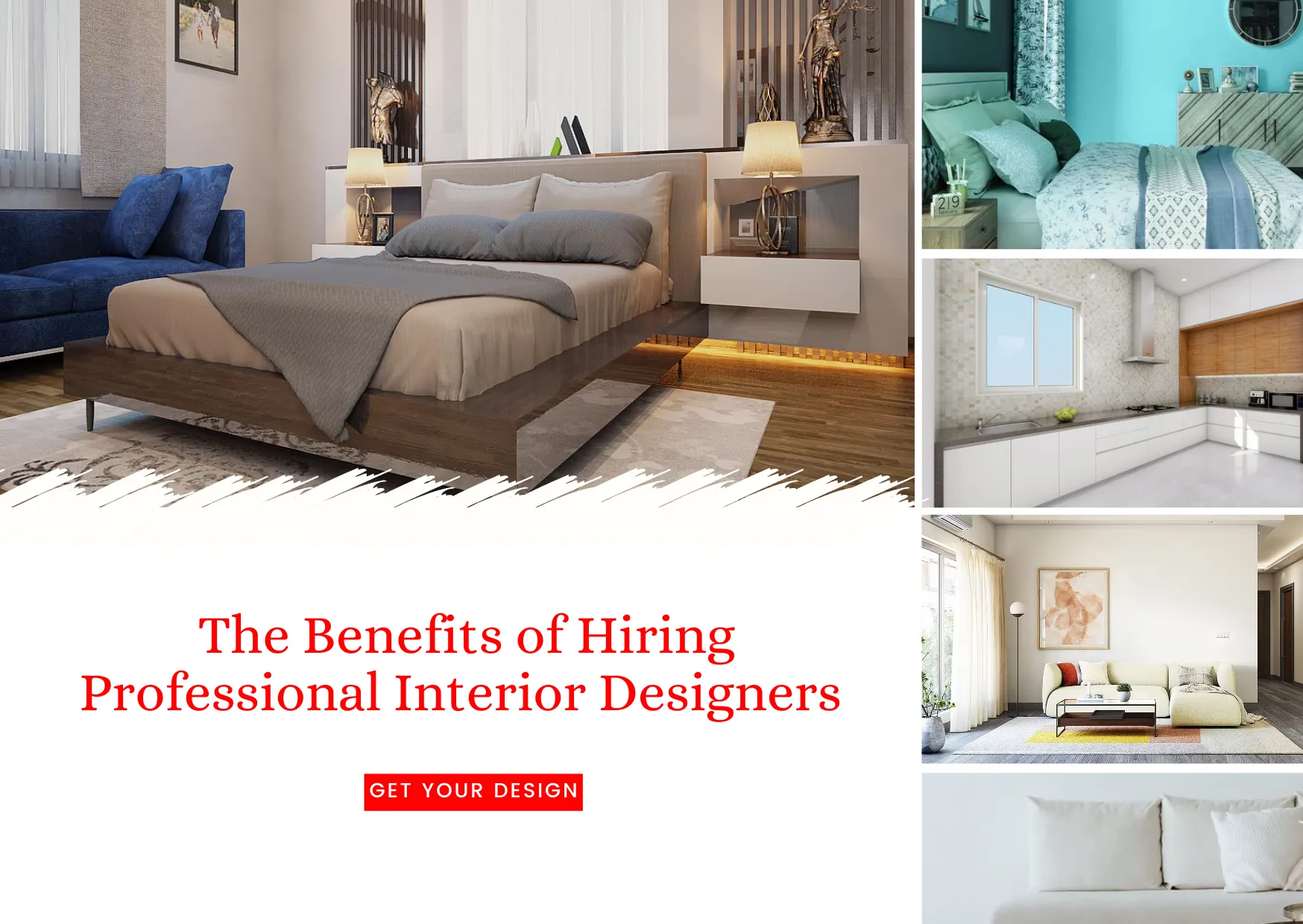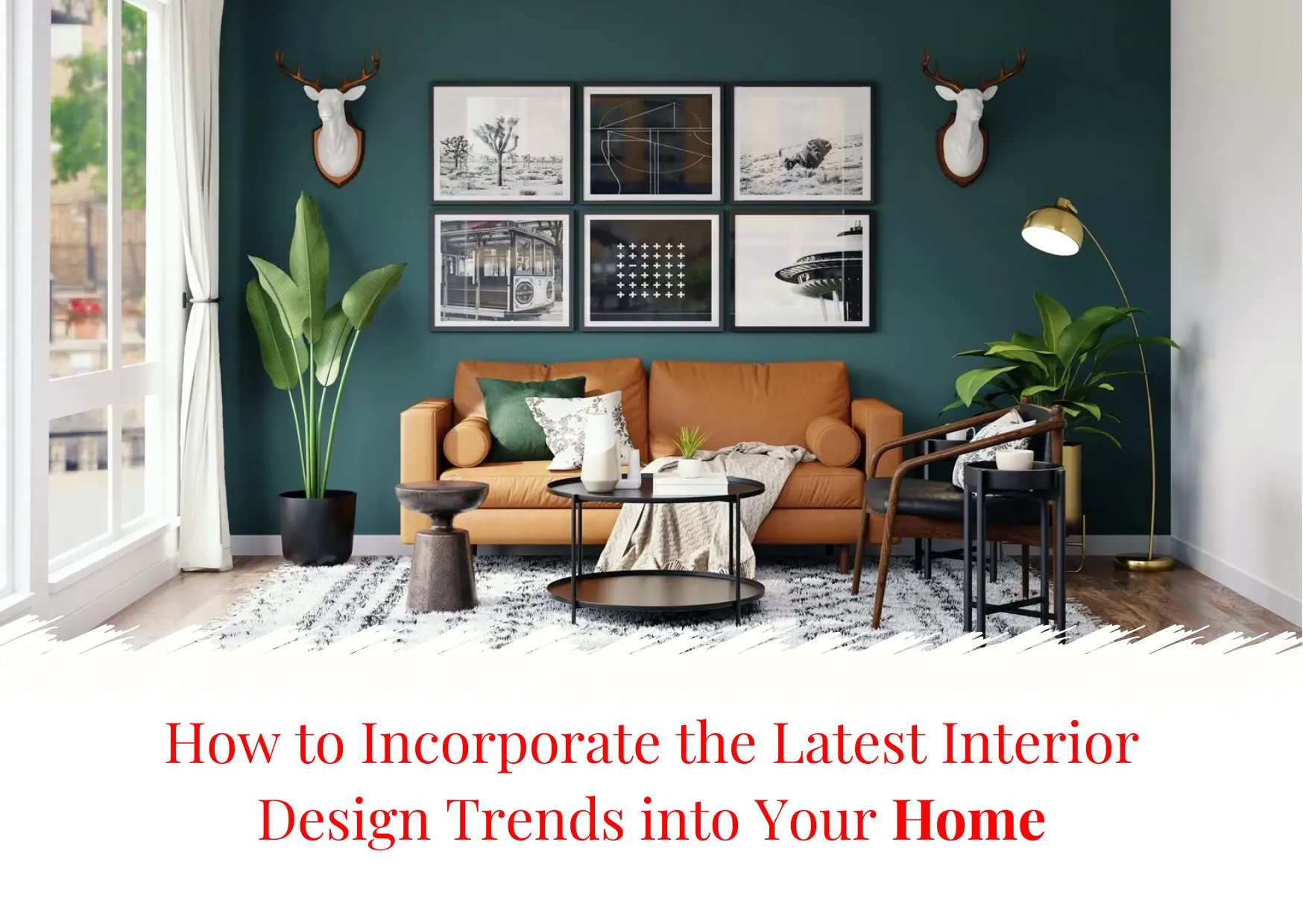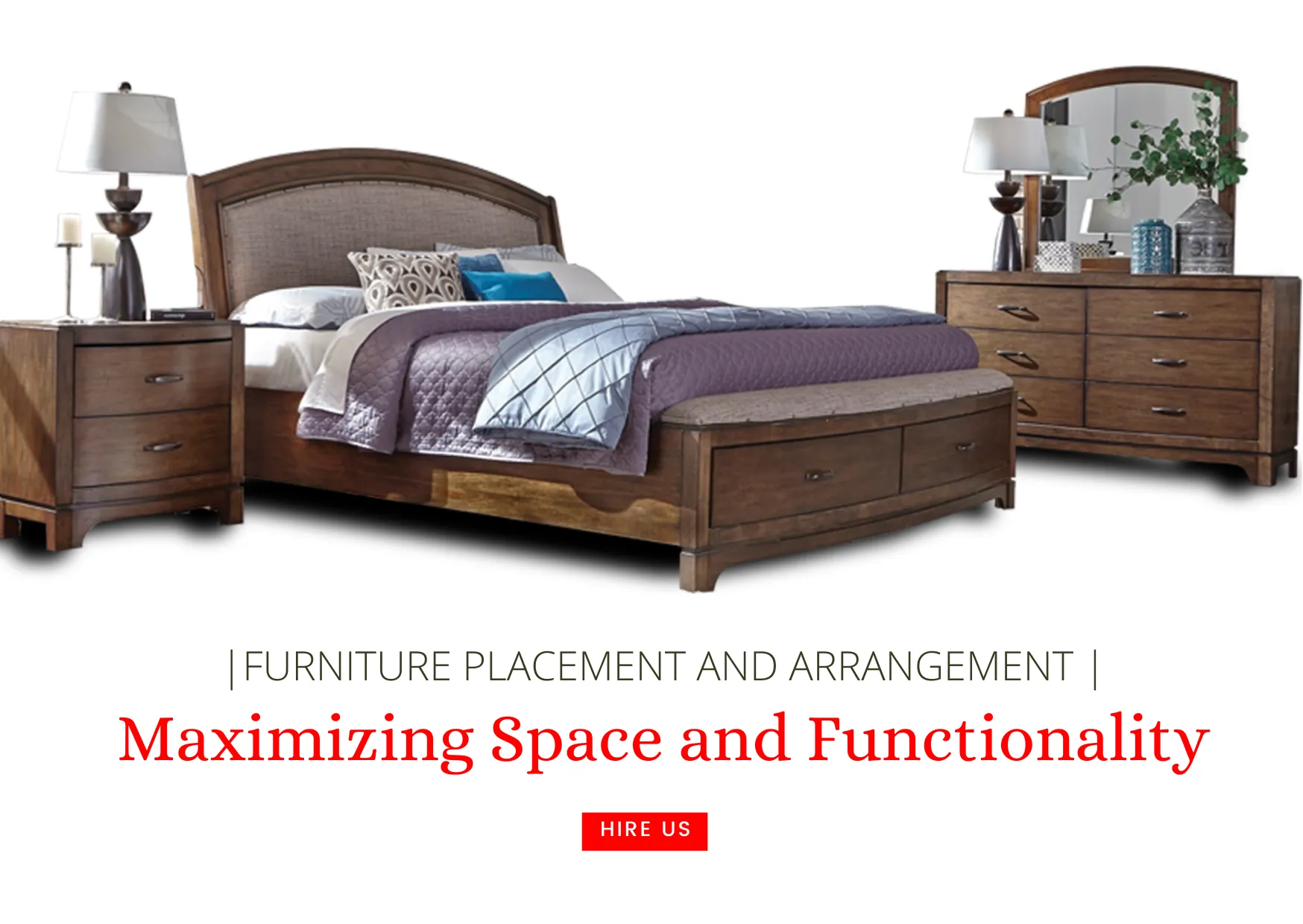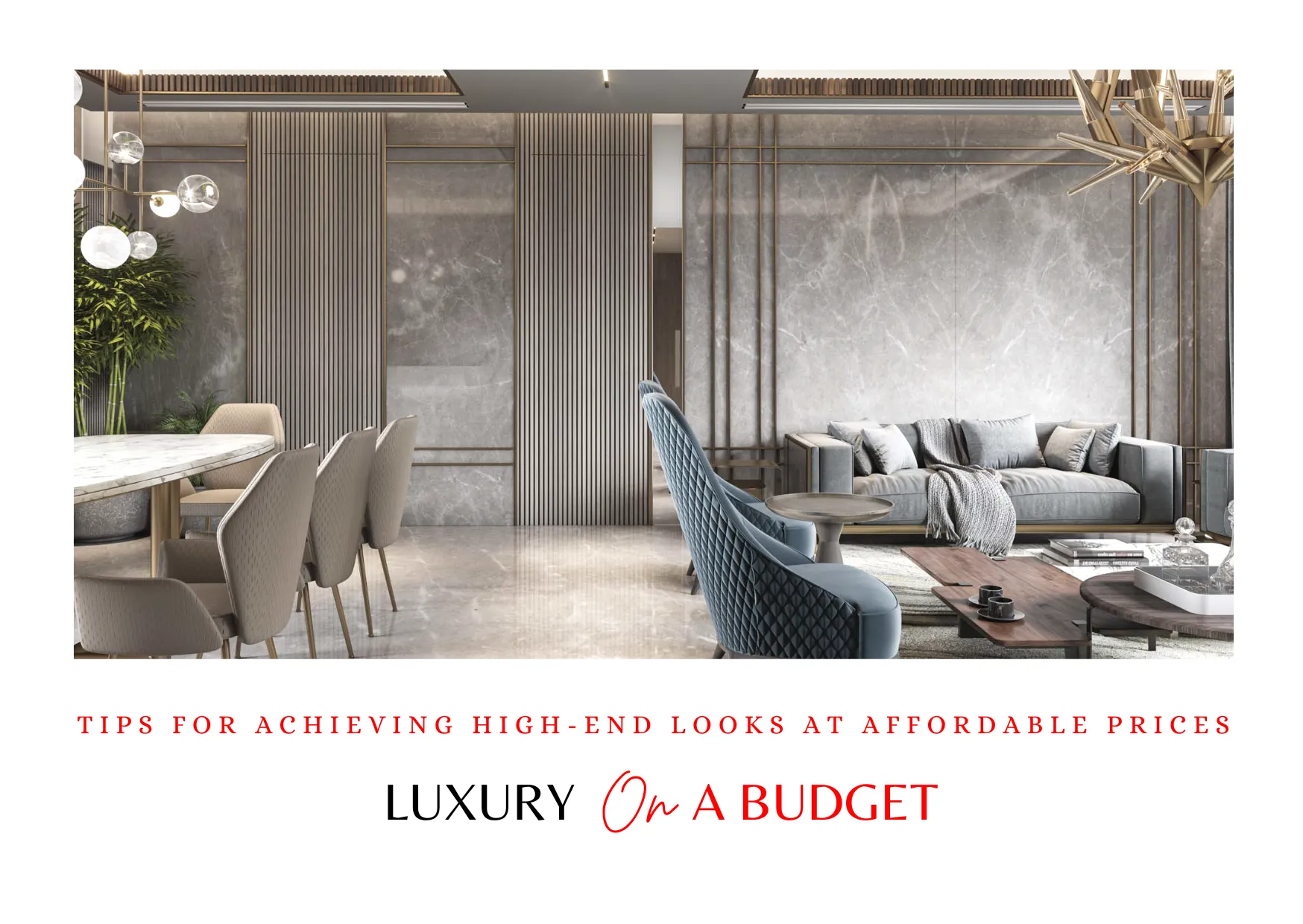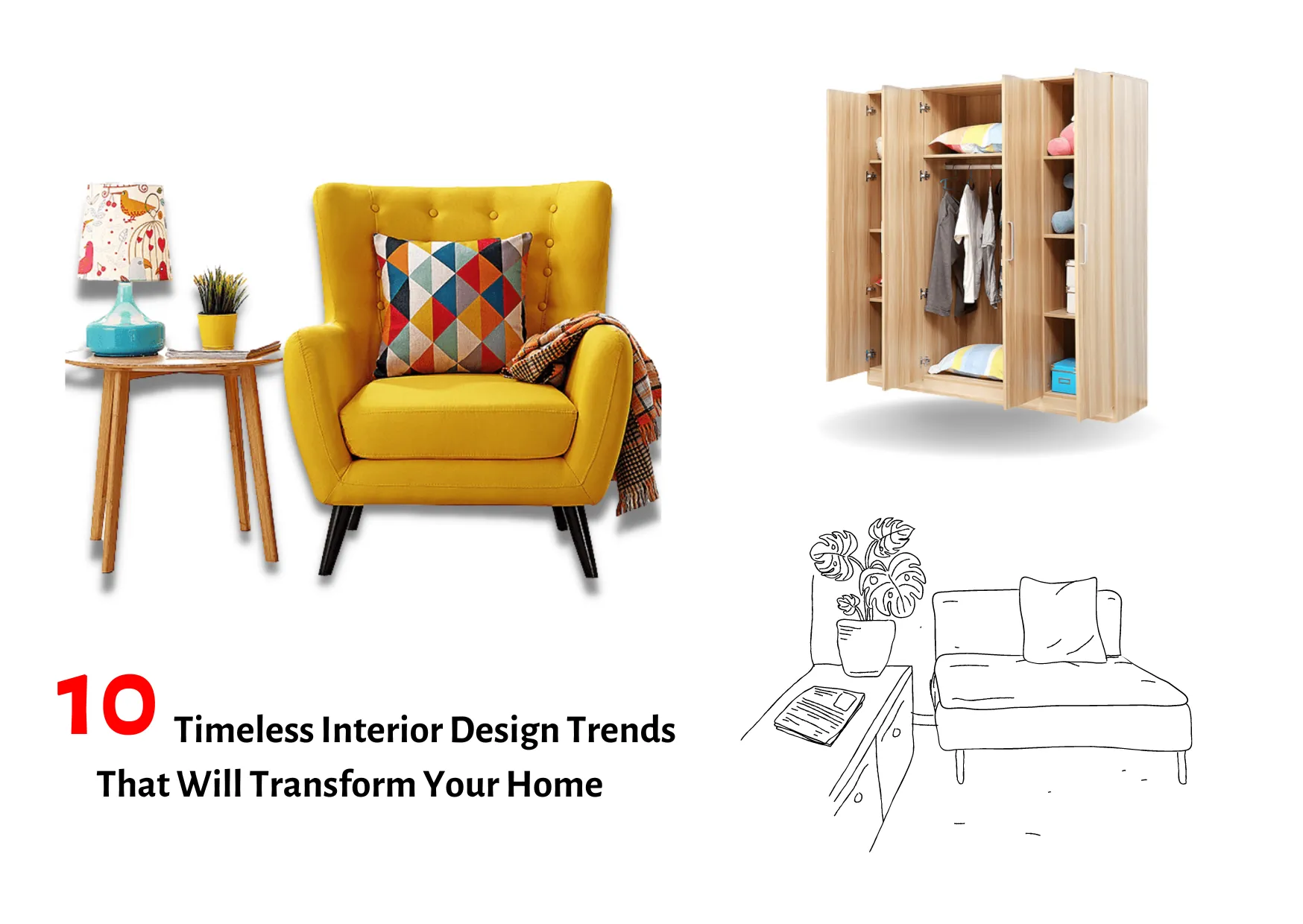E-53 Ground Floor, Sector-63, Noida
We will contact you soon with a responce.
We will contact you soon with a responce.
We will contact you soon with a responce.
Your home is more than just a collection of walls and furniture—it's a reflection of your personality, a sanctuary where you can unwind and rejuvenate. Whether you've just moved into a new house or are looking to revamp your current living space, hiring a professional interior designer can make all the difference. These talented professionals have the expertise, vision, and creativity to transform any space into a stunning masterpiece. In this blog post, we'll explore the benefits of hiring professional interior designers and how they can help you create a home that truly reflects your style and taste.
1. Unleash Your Vision with Expertise: While you may have a general idea of how you want your space to look, translating that vision into reality can be challenging. Professional interior designers are trained to understand your needs, preferences, and lifestyle. They possess a wealth of knowledge about design principles, color schemes, furniture arrangement, and materials. By harnessing their expertise, you can bring your vision to life with their guidance, ensuring that every aspect of your design is carefully planned and executed.
2. Tailored Designs for Your Unique Space: Every home is unique, with its own layout, architectural elements, and quirks. Professional interior designers have a keen eye for maximizing the potential of a space and can work wonders even with the most challenging layouts. They can create customized designs that seamlessly integrate with your space, making it more functional, aesthetically pleasing, and optimized for your lifestyle. Whether you have a small apartment or a sprawling mansion, a professional interior designer will help you make the most of what you have, enhancing the overall atmosphere and functionality.
3. Time and Money Savings: It's a common misconception that hiring an interior designer is a luxury that only the wealthy can afford. In reality, professional designers can save you time and money in the long run. With their industry connections and access to resources, they can source furniture, materials, and décor items at better prices than what's available to the general public. Additionally, their meticulous planning and project management skills ensure that your project stays on track, avoiding costly mistakes and unnecessary delays. By hiring an interior designer, you'll not only achieve a more cohesive and well-designed space but also potentially save money through their expertise.
4. Attention to Detail and Personalization: One of the standout qualities of professional interior designers is their attention to detail. They understand that it's the little things that make a big impact in a space. From selecting the perfect lighting fixtures to choosing the right textiles and accessories, they leave no stone unturned in creating a cohesive and harmonious environment. Furthermore, they are skilled at understanding your personal style and translating it into a design that is uniquely yours. Whether you prefer a minimalist aesthetic or a more eclectic mix, an interior designer will help curate a space that resonates with your personality and makes you feel truly at home.
5. Stress-Free Design Process: Undertaking a home design project can be overwhelming, especially if you have limited experience in interior design. A professional interior designer takes the burden off your shoulders, managing all the aspects of the project from start to finish. They will handle the logistics, coordinate with contractors and suppliers, and ensure that every detail is executed flawlessly. This leaves you free to focus on enjoying the process and eagerly anticipating the final result. With a professional by your side, you can sit back, relax, and watch your dream space come to life.
In conclusion, hiring a professional interior designer is a wise investment when it comes to transforming your space. From unleashing your vision with their expertise to creating a personalized and functional design, these talented professionals bring a wealth of knowledge and creativity to the table. Moreover, they save you time, money, and stress by managing every aspect of the project. So, if you're ready to elevate your living space to new heights, consider enlisting the help of a professional interior designer and embark on an exciting journey of transformation.
Keeping up with the latest interior design trends can be both exciting and challenging. With design styles and preferences constantly evolving, it can be difficult to know how to update your home while maintaining a timeless appeal. However, by understanding the latest trends and incorporating them thoughtfully, you can create a stylish and welcoming space that reflects your personal style. In this blog post, we'll explore some key tips on how to incorporate the latest interior design trends into your home.
1. Research and Discover:
To begin, immerse yourself in the world of interior design by researching the latest trends and styles. Read magazines, browse online platforms, visit furniture showrooms, and explore social media platforms like Pinterest and Instagram. This will help you identify the trends that resonate with you and envision how they can be integrated into your home.
2. Neutral Base with Pops of Color:
A timeless approach is to establish a neutral base for your home's color scheme. Opt for neutral shades such as whites, creams, grays, or beiges for walls, floors, and larger furniture pieces. This provides a versatile backdrop that allows you to experiment with vibrant colors and patterns through accessories, artwork, and accent furniture. Incorporating these pops of color will infuse energy and personality into your space while keeping it adaptable to changing trends.
3. Embrace Natural Elements:
The use of natural elements in interior design has gained significant popularity in recent years. Consider incorporating materials like wood, stone, and metal into your home to create a warm and organic ambiance. Introduce wooden furniture pieces, exposed brick walls, or stone countertops to add texture and character. Additionally, incorporating indoor plants not only brings life and freshness but also enhances the connection between nature and your living spaces.
4. Mix Old and New:
A key aspect of modern interior design is the blending of old and new elements. Embrace the trend of mixing vintage or antique pieces with contemporary furniture and décor. This creates a unique juxtaposition that adds depth and visual interest to your space. Look for antique markets or thrift stores to find one-of-a-kind pieces that can be integrated seamlessly with your existing furniture.
5. Play with Patterns and Textures:
Experimenting with patterns and textures is a great way to add visual intrigue to your home. Mix and match different patterns, such as geometric prints, floral designs, or abstract motifs, to create a vibrant atmosphere. Incorporate texture through textiles like rugs, cushions, and curtains. Velvet, faux furs, or natural fibers like jute and linen can add depth and tactile appeal to your space.
6. Statement Lighting:
Lighting is a crucial element in interior design and can greatly influence the overall ambiance of a room. Consider incorporating statement lighting fixtures as a focal point in your space. Oversized pendant lights, chandeliers, or sculptural lamps can not only provide functional lighting but also serve as striking design elements.
7. Emphasize Sustainability:
As sustainability continues to be a growing concern, incorporating eco-friendly design elements is a significant trend in interior design. Look for furniture and décor made from sustainable materials like reclaimed wood or recycled plastics. Opt for energy-efficient lighting options and invest in appliances with high energy ratings. Integrating sustainability into your home not only helps the environment but also adds a modern and conscientious touch to your design.
Conclusion:
To incorporate the latest interior design trends into your home, it is important to stay informed and up-to-date with the latest trends in the industry. This article provided valuable insights and tips on how to do just that. By contacting us, we can assist you further in incorporating these trends into your home and help you create a space that is both fashionable and functional. Let us help you transform your home into a stylish haven.
One of the key aspects of interior design is furniture placement and arrangement. When done right, it can transform a space, making it more visually appealing, functional, and comfortable. Effective furniture arrangement not only maximizes the available space but also enhances the flow and functionality of a room. In this blog post, we will explore various strategies and tips for optimizing furniture placement to create a harmonious and inviting living space.
1. Assessing the Room:
Before diving into furniture arrangement, it is essential to assess the room's layout, dimensions, and architectural features. Consider the size, shape, and purpose of the room to determine the overall design objectives. Take note of windows, doors, and other focal points that can influence furniture placement decisions.
2. Establish a Focal Point:
Identify a focal point in the room, such as a fireplace, a large window with a view, or an entertainment center. The focal point serves as a visual anchor and helps guide furniture placement decisions. Arrange seating or other furniture pieces around this focal point to create a cohesive and inviting arrangement.
3. Consider Traffic Flow:
One crucial aspect of furniture arrangement is ensuring smooth traffic flow throughout the room. Arrange furniture in a way that allows easy movement and navigation without any obstructions. Leave enough space between furniture pieces to enable comfortable passage and ensure that doorways and walkways are unobstructed.
4. Create Conversation Areas:
In rooms where socializing and conversations are a priority, it is essential to create cozy and functional conversation areas. Arrange seating in a way that encourages face-to-face interaction and facilitates easy communication. Consider using sofas, chairs, or sectionals to form intimate groupings, ensuring that they are arranged in a way that promotes conversation and comfort.
5. Scale and Proportion:
Pay attention to the scale and proportion of the furniture pieces in relation to the room size. Avoid overcrowding small spaces with oversized furniture, as it can make the room feel cramped. Similarly, in larger rooms, avoid using too many small furniture pieces, which can make the space appear disjointed. Achieving a balance between furniture size and room proportions is crucial for an aesthetically pleasing arrangement.
6. Multi-functional Furniture:
Consider incorporating multi-functional furniture pieces into your arrangement. Items like ottomans with hidden storage, sofa beds, or nesting tables can serve multiple purposes, allowing you to maximize space and functionality. These versatile pieces not only provide additional storage but also adapt to changing needs, making them valuable assets in furniture placement.
7. Balance and Symmetry:
Achieving balance and symmetry in furniture arrangement creates a sense of harmony and visual appeal. Place furniture pieces of similar size, shape, and visual weight on opposite sides of the room to create a balanced look. However, keep in mind that an entirely symmetrical arrangement might not suit all spaces, and sometimes a more eclectic or asymmetrical approach can add interest and character.
8. Utilize Vertical Space:
Maximize storage and display options by utilizing vertical space. Incorporate tall bookshelves, wall-mounted cabinets, or open shelving units to make use of vertical surfaces. This not only provides additional storage but also draws the eye upward, making feel more spacious. Remember to balance the distribution of objects on vertical surfaces to maintain a visually pleasing arrangement.
9. Experiment and Adapt:
Don't be afraid to experiment with different furniture arrangements to find what works best for your space. Rearranging furniture can give a fresh perspective and potentially uncover hidden possibilities for your room's layout. Be open to adapting and tweaking your arrangement as your needs and preferences change over time.
In conclusion, furniture placement and arrangement play a crucial role in maximizing space and functionality within a room. By strategically positioning furniture, one can create a visually appealing and efficient layout that enhances the overall aesthetic and usability of the space. Whether it is for a residential or commercial setting, taking the time to plan and properly arrange furniture can greatly improve the functionality and flow of the area. To learn more about furniture placement and arrangement techniques, consult with our professional team who can provide expert advice and assistance.
Who doesn't love the idea of indulging in luxurious styles and creating an elegant living space? However, the price tags associated with high-end aesthetics can often feel like a barrier. The good news is that achieving a luxurious look doesn't necessarily require breaking the bank. With a little creativity, resourcefulness, and smart shopping, you can transform your space and personal style into a sophisticated and upscale haven without compromising your budget. In this blog, we will explore some valuable tips to help you attain a high-end look interior on a budget.
1. Plan and prioritize:
Before diving into a design project or revamping your wardrobe, start by creating a plan. Assess your space or personal style and identify the key elements you want to focus on. By establishing your priorities, you can allocate your budget effectively and avoid unnecessary expenses. Whether it's a statement piece of furniture or a timeless fashion accessory, understanding your preferences will guide you toward making smarter choices.
2. Opt for timeless pieces:
Investing in timeless pieces is a smart strategy for achieving a high-end look on a budget. Classic designs and styles tend to transcend trends, making them valuable additions to any space or wardrobe. Look for furniture with clean lines, neutral colors, and durable materials. Similarly, when building a wardrobe, choose versatile, well-made clothing items that can be mixed and matched effortlessly. These timeless pieces will exude elegance and sophistication without the need for constant updates.
3. Embrace thrift shopping and secondhand finds:
Thrift shopping and exploring secondhand markets can be a treasure trove for discovering high-quality items at budget-friendly prices. Many upscale neighborhoods have consignment shops where you can find pre-loved designer pieces at a fraction of their original cost. Keep an open mind and take your time to search through these stores. You never know what hidden gems you might stumble upon, such as unique furniture, vintage accessories, or designer garments.
4. DIY and upcycling:
Unleash your creativity and embrace do-it-yourself (DIY) projects to add a touch of luxury to your space or wardrobe. With the abundance of online tutorials and inspiration, you can transform basic items into stylish and personalized pieces. For example, repainting old furniture or reupholstering a thrifted chair with an elegant fabric can instantly elevate its appearance. Similarly, refreshing a plain shirt with unique buttons or adding embellishments to a simple dress can give it a high-end flair.
5. Pay attention to details:
The little details can make a significant impact when it comes to achieving a luxurious look. In interior design, consider adding crown molding, installing elegant light fixtures, or incorporating decorative accents like mirrors or artwork. These small touches can elevate the overall ambiance and create a high-end feel. Similarly, in fashion, pay attention to accessories such as jewelry, scarves, or belts, as they can effortlessly enhance an outfit and give it a sophisticated touch.
6. Use lighting strategically:
Proper lighting can instantly transform a space and create an aura of luxury. To achieve the desired effect, play around with various lighting options. Consider using soft, warm-toned bulbs to create a cozy atmosphere, or install dimmer switches to control the intensity of the lighting. Additionally, strategically placed lamps or statement chandeliers can become focal points and add a sense of grandeur to any room.
Achieving a luxurious look on a budget is not always easy, but with the right knowledge and tools, it is definitely possible. This article explored various tips and techniques for achieving a high-end look without breaking the bank. By shopping smart, being creative with design, and investing in high-quality statement pieces, anyone can create a luxurious space on a budget. Put these tips into practice and achieve the sophisticated and stylish look you desire, without overspending.
Interior design is an art that is constantly evolving. What was trendy yesterday may not be in vogue today – creating confusion for homeowners who want to keep their homes fashionable at all times. However, there are certain interior design trends that never go out of style and continue to be popular year after year. Knowing what these timeless design features are can help you create a beautiful, classic, and functional home that will stand the test of time. Whether you are a new homeowner or a seasoned pro, check out these timeless interior design trends that will transform your home.
1. Minimalism: Clean lines, uncluttered spaces, and a focus on functionality are the hallmarks of minimalist design. Opt for neutral color palettes, sleek furniture, and open layouts to create a calm and serene environment. (Explore Minimalist Designs)
2. Natural Materials: Incorporating natural materials such as wood, stone, and rattan into your home brings warmth and texture. Use hardwood floors, reclaimed wood furniture, and stone countertops to add a timeless appeal.
3. Sustainable Design: With an increasing focus on sustainability, eco-friendly design elements have become a timeless trend. Incorporate energy-efficient appliances, recycled materials, and indoor plants to create a healthier and more sustainable living space.
4. Vintage and Mid-Century Modern: Incorporating vintage or mid-century modern furniture and accessories can instantly add character and style to your home. Look for iconic pieces like Eames chairs, retro lighting fixtures, and vintage artwork to create a sense of nostalgia.
5. Statement Lighting: Eye-catching lighting fixtures serve as both functional and decorative elements. Choose chandeliers, pendant lights, or sculptural lamps to make a bold statement and add visual interest to any room.
6. Open Floor Plans: Open floor plans have become increasingly popular and timeless, as they create a sense of flow and connectivity between different areas of the home. Knocking down walls to create open spaces can make your home feel more spacious and inviting.
7. Neutral Color Palettes: Neutral color schemes, such as shades of white, beige, and gray, have stood the test of time. These colors create a timeless backdrop that allows you to incorporate different styles and accents throughout the years.
8. Mix of Old and New: Combining modern elements with vintage or antique pieces adds depth and character to your home. Pair a contemporary sofa with a vintage coffee table or display a collection of antique books alongside minimalist shelving to create a unique and timeless look.
9. Biophilic Design: Biophilic design focuses on connecting humans with nature. Incorporate natural elements like large windows, indoor plants, and natural textures to create a soothing and refreshing environment that brings the outdoors inside.
10. Customization and Personalization: Creating a home that reflects your personality and interests never goes out of style. Incorporate personalized elements such as artwork, family photos, and unique accessories to make your home truly yours.
interior design trends in your home can add a touch of elegance and sophistication that will last for years to come. From earthy tones to multipurpose spaces, these design trends offer versatility and functionality without sacrificing style. At Interior Design Trends, we specialize in bringing these trends to life and transforming homes. Contact us for more information on how we can help elevate your home's interior design.
E-53 Ground Floor, Sector-63, Noida
Turnkey Projects +91 99901 55566
Online Designing +91 9999423006
CAREERS
care@interiordesignwala.com
We will contact you soon with a responce.

